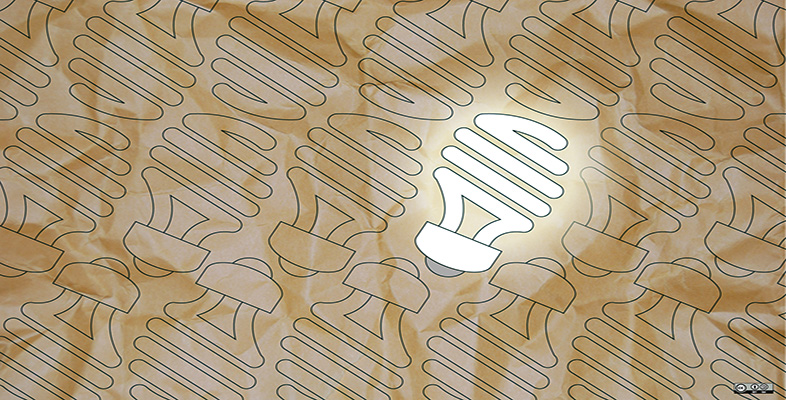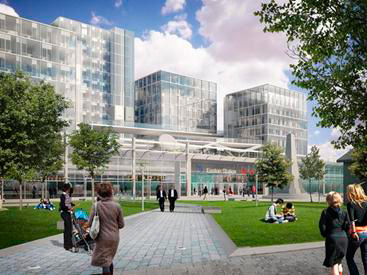4.1 Representing visions for people
Having a vision for an innovation, and developing this into a design, is often not enough to enable the innovation to be realised. We often need the support and permission of others to allow the vision to become reality. On a small scale we may want to convince other members of a design team to accept that a particular design feature should be incorporated into a new product, such as a system for reusing hot water within a washing machine. On a bigger scale we may want to convince some authority, such as a manager, policy maker or regulatory body for example, if we require planning permission to construct or develop a building. On an even bigger scale it may be necessary to convince members of the general public to use a newly introduced public service such as a new city-wide bicycle scheme. Dialogue and words can be powerful tools for making such arguments, and for convincing people to believe that an innovation is necessary. But, as we have seen throughout this course, often a representation, such as an image or model, can add an extra dimension to this discourse. Representations engage with different areas of the brain, encourage visual investigation, suggest visual metaphors and can often convey much more information than words alone. This can be attested by the relentless bombardment of visual imagery from the advertising industry, through television, newspapers, magazines, billboards, product placement, etc. Representations sell! They convince people to buy into a vision, to believe that the products and services on sale could improve their lives.
In projects, you will often be expected to sell or ‘pitch’ an innovation, concept or design that you have developed, and representations will play an important role in how you do this. For example, architects and planners often use representations when pitching their visions to potential clients, as illustrated in Figure 16. This is a representation produced by Arup and Grimshaw in 2012 to communicate their vision for the redevelopment of London Euston Station to accommodate HS2, an innovation scheme in which a high-speed railway will link the North with the South of England. The station design
aims to improve access, space and overall experience for all rail users and the local community.
(Arup, 2012)
Activity 8 Interpreting representations
Take a good look at the representation in Figure 16, of Arup and Grimshaw’s design for the redevelopment of Euston Station. What does the representation tell you about the vision for the improved station? Are you convinced by the representation? Use the text box to record your thoughts.
Answer
The representation presents a snapshot of how the redeveloped Euston will look in the context of the site. It presents a best possible scenario of the scene, a warm sunny day with beautiful blue skies that provide flattering lighting for the proposed building. Concrete and glass look clean, and the grass and trees look green and fresh. Members of the public are seen to be enjoying the space, either strolling to or from the terminal or relaxing on the grass.
At first glance, the representation is effective at selling the architects’ vision for the project. According to the representation the design fulfills the aim to ‘improve access, space and overall experience for all rail users and the local community’. But on further consideration I feel that the representation presents an unrealistic scene: Euston is the sixth busiest train station in the UK, but the number of people in the representation does not suggest this. Also, the representation presents the buildings and the public space as they would look soon after construction – it does not give any indication of how it would weather and age.
In order to persuade others to accept their innovations, designers often create representations of a product, service or system, which presents the outcome in the best possible light. For architects, this involves presenting future scenes that illustrate how their designs will look in context, as illustrated in Figure 16. Often, many such representations are produced which emphasise different aspects of the design, with different audiences in mind. In this role, representations act as a kind of visual propaganda; they are weapons in what has been called the ‘battle for people’s minds’ (Jowett and O’Donnell, 2011). The shape of this battle is influenced by many factors, but is primarily determined by the sophistication of tools and methods of communication, as well as the understanding of psychology and human behaviour. Modern architects often use digital images, like the image in Figure 16, to represent their designs. These are effective methods of communication because they are flexible enough to allow architects to present different aspects of a design. They also engage well with human psychology because they can produce photorealistic results which allow people to visualise how a site could look in the future.
The architectural rendering in Figure 16 is just one example of the visual representations commonly used to persuade people to accept an innovation. The proposal to build HS2 has generated many other types of representation that are used by campaigns both for and against the scheme. Some argue it is a scheme that responds to the needs of people, to support their transport requirements. Some argue it is a scheme that responds to the contextual needs of the current financial climate, to improve the economy of the UK by investing heavily in new infrastructure. Another argument is that it is a scheme that responds to technological development, to enable the UK to modernise its railways in line with other technologically advanced nations such as Japan, France and China. Regardless of the argument, HS2 is hotly debated outside and inside parliament. Campaigns for the scheme argue that it is a necessary improvement. Campaigns against the scheme argue that the cost is too high – financially, environmentally and socially. Within this debate, representations play an important role, and both campaigns for and against HS2 are employing representations to persuade the public and to influence opinion, using arguments linked to the sources of innovation: material things, people and context. And, as we shall see, underlying this visual debate lie the same factors we identified in the architectural rendering in Figure 16: method of communication and understanding of psychology.

